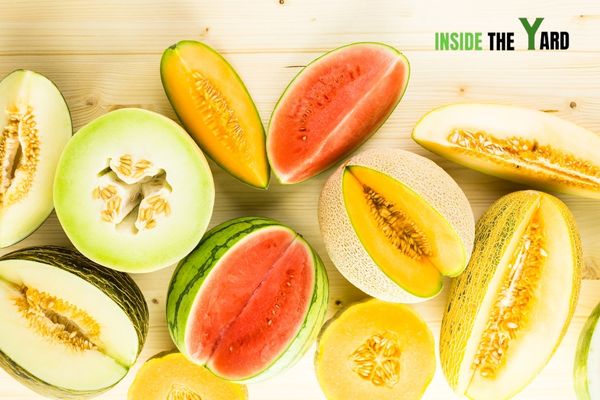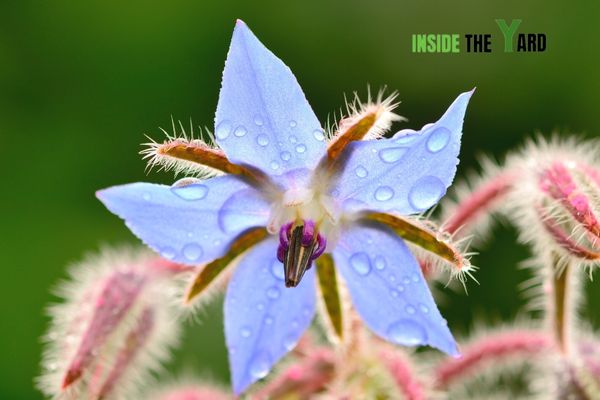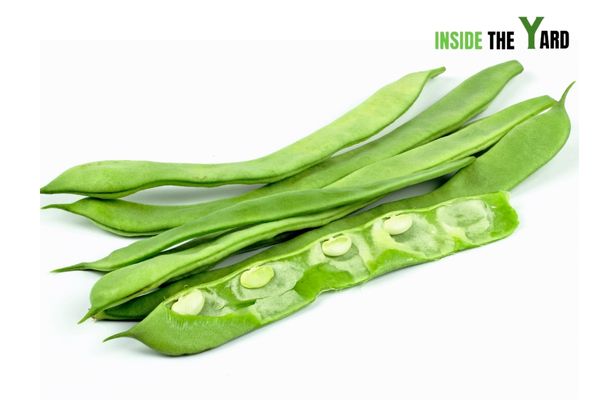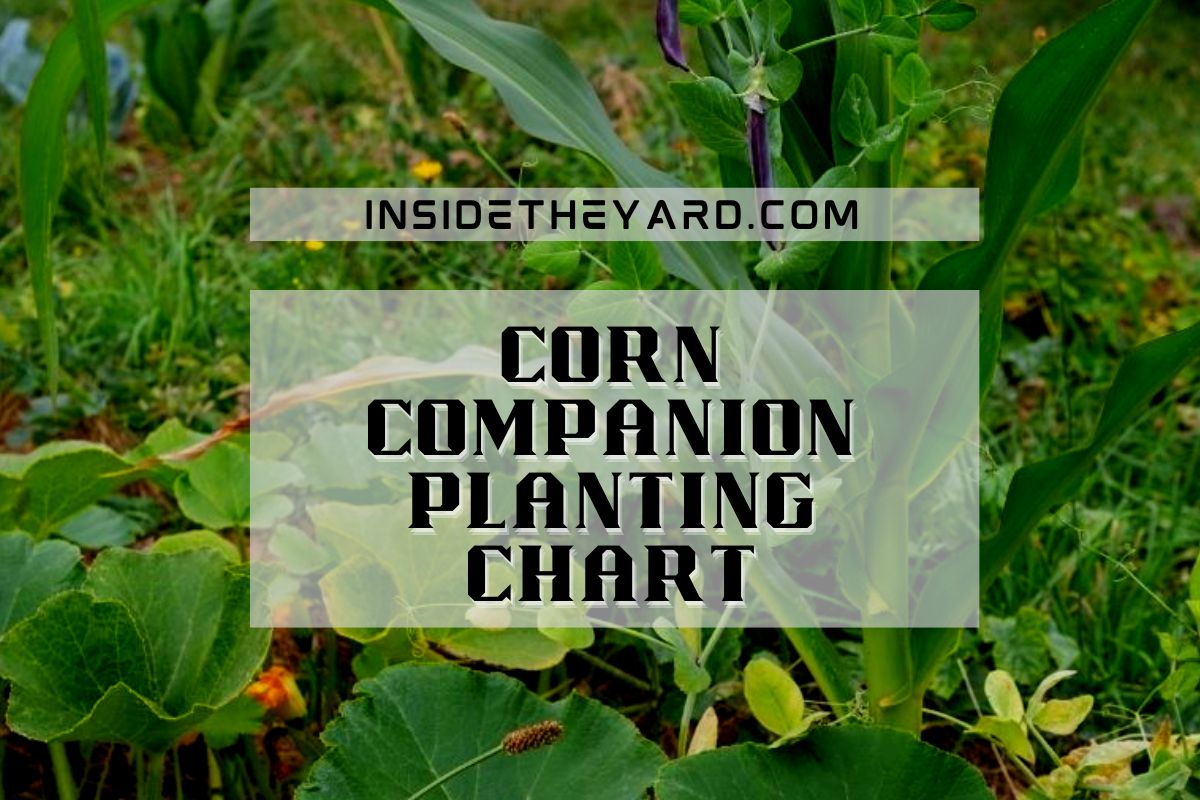Is there any real benefit of having companion plants with corn? Yes, there are too many upsides to this. Harvesting crops with companion plants create a natural environment.
However, planting unsuitable crops with the plant can ruin your harvest. So how to make sure you are going in the right direction? Take help from the corn companion planting chart and arrange your garden accordingly.
This article will help you with all the information you need on planting corn with companion plants. Here you will know everything from the benefits of companion plants to the ideal companion plants for your corn garden.
Corn Companion Planting Chart: The Complete List
Wondering what is a companion plant for corn? Well, it’s the plants that facilitate corn’s growth. As you know by now, a companion plant provides certain benefits to aid the crops to have better production.
But which plants are ideal for corn? Take a look at the list below,
| Companion Plant | Benefits |
| Green beans | Attracts helpful insects to eat away corn pests |
| Lime | Adds Magnesium and Calcium to the soil |
| Melons | Prevents weed growth and keeps the soil moist |
| Borage | Deters pest worms from corn |
| Mint | Keeps grazing animals away |
| Pole beans | Provides nitrogen in the soil |
Now let’s check their benefits in detail.
Green Beans As Corn Companion Plant

Green beans are one of the most beneficial plants for corn. This plant attracts useful insects that eat the pests of corn and kernels. For example, leaf beetles, leafhoppers, and fall armyworms are drawn by green beans.
The best thing about these insects is that they don’t harm the corn in any way. So, it’s a win-win.
Lime As Corn Companion Plant

The three most crucial elements for corn are magnesium, calcium, and sulfur. Lime is the best when it comes to enriching soil with Mg and Ca. In other words, it’s the ideal plant for making the soil nutrient enough for corn.
Melons As Corn Companion Plant

Melons are good vine plants. They spread out along the ground and cover a great amount of area. This prevents weed growth. In addition, melon is effective in keeping the soil perfectly moist for the proper development of corns.
Cucumber and winter squash gives the same result. These plants help the soil to preserve the necessary moisture.
Borage As Corn Companion Plant

Borage has beautiful flowers that attract beneficial bugs. These insects help the plant by eating harmful pests. In addition, this same plant deters worms.
In other words, borage is a complete defense against insects for corn. Marigolds work in the same way for many crops.
Mint As Corn Companion Plant

While other aromatic plants, like dill and thyme, are ideal for repelling insects, mint keeps bigger prey at bay. Corn is a favorite of many grazing animals like deer and cows. Sometimes a fence is not enough to stop them from attacking your crops.
In this type of situation, mint can save your harvest. Have mint plants on the edge of your corn field, and their aroma should keep all the grazing animals at a safe distance.
Pole Beans As Corn Companion Plant

Nitrogen is one of those elements essential for all kinds of plants. The bigger corn plants need it a bit more than usual. Pole beans can provide this extra nitrogen to your corn plants.
Apart from this, pole beans keep the soil strong. This plant basically does everything for corn except for repelling insects.
These are mainly all the beneficial companion plants for corn. Your choice completely depends on the condition of your crops. See what your cornfield is lacking and plant the option that fills in for that loss.
Why Plant The Companion Plants With Corn? (Top Benefits)
If you are planning on planting different types of corn together, hold your horses. Before getting into the matter, take a quick look at all the benefits of having companion plants with corn below,
1. Puts Off Pests
There are certain plants, such as garlic, that works like natural pest deterrent. Usually, the smell of these plants keeps all the insects and harmful pests away.
2. Attracting Helpful Insects
Some attractive plants, such as borage, invite useful insects. Borage invites pollinating bees. This helps in flourishing the overall growth of corn in your garden.
Some plants invite pest-eating wasps as well. They won’t do any harm to your plant but eat up all the insects slowly devouring your crops.
3. Improve Soil Quality
Usually, the plants suck in nutrients from the soil, leaving the ground dry and unsuitable for other plants. But many plants are known for improving soil quality. For example, the lime tree adds magnesium and calcium to the soil. Both these nutrient elements are essential for the proper growth of corns.
4. Minimizes The Growth Of Weed
Weeds are harmful to your crops. But handling them regularly is also a pain in the neck. You can easily get rid of this situation just by planting more and more companion trees around your corn plants. Extra plants will take up all the nutrients of the soil and leave nothing for the weed.
5. It Saves Tons Of Space
Having multiple plants in a single piece of land saves a ton of space. Instead of allotting different plots for different plants, harvest everything in a single field. This will not only increase your production but leave a lot of areas free for harvesting other crops.
These benefits are undoubtedly good news for you. As you can see, having a companion plant won’t only help your plant grow with efficiency but offer you the opportunity to save cash and space as well.
What Happens if You Choose the Wrong Companion Plant?
Companion trees are indeed your trees’ companions. But to utilize their benefits properly, you have to make sure you are using the right plant in the right way. What if you don’t? Here’s what happens if you wrongly use companion plants for your cornfield,
1. Not Enough Space For The Plants To Breathe
Your corn needs enough space to take nutrients from the soil and consume the sunlight. If any other plants interfere with your crop’s personal space, the crop won’t grow as effectively.
Make sure to maintain enough space between the crops to avoid harmful consequences.
2. Problems With Watering
Some crops require a low amount of water while others demand a lot. A huge problem occurs when both these types of crops are planted side by side. If you water too much, the plant with low water-holding capacity will die. On the other hand, if you water too little, the plant with higher demand for fluid will get weaker soon.
This problem has a simple solution. Just keep the soil moist all the time.
3. Unnecessary shading
Some crops, usually tall ones, provide shades. While shade is beneficial for some plants, the matter is not the same in the case of corn. Corn needs direct sunlight and doesn’t grow well in shady areas.
This is why make sure not to plant tall crops near your corn. It will help your crops grow faster and with abundant nutrients.
As you can see, the downsides of planting companion plants are not that complex. If you know how to handle the situation, you can easily avoid the complications of the wrong companion plants.
Frequently Asked Questions (FAQs)
What is a good companion for corn?
Borage, cucumber, and pole beans are some of the corn’s most popular companion plants. These plants attract beneficial insects, deter harmful pests, and provide sufficient nutrients and moisture for your corn field.
What should not be planted near corn?
Never plant cabbage, tomatoes, eggplants, or fennel anywhere near your cornfield. These plants will significantly hamper the growth of corn.
Can I grow carrots and corn together?
Yes, it is possible to grow carrots along with corn. Carrot is a good neighbor of corn because carrots can remarkably make the soil strong.
Can tomatoes and corn be planted near each other?
Tomatoes and corn shouldn’t be planted near each other. Tomatoes are notorious for attracting hornworms and earworms. These insects are dangerous to corn and cornfields.
Conclusion
Not every plant goes along with corn. Some are very beneficial for their growth, while some are likely to destroy corn from the root. However, now that you have the corn companion planting chart in your hand, arranging your field in the right way shouldn’t be a trouble. Closely check the benefits of each companion plant and determine which option will help your corn field thrive most effectively. After you are done choosing, plant them in the right way to get the best result. However, no matter what you do, taking regular care of your garden is essential. Nothing can replace this need.
